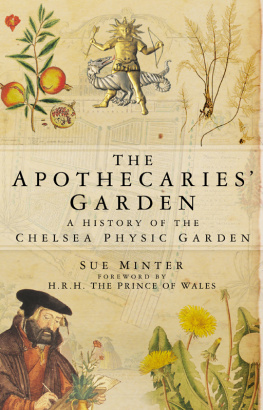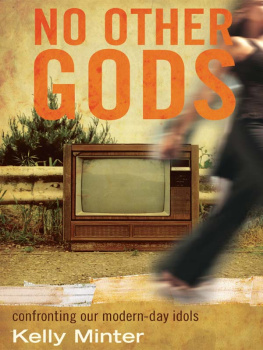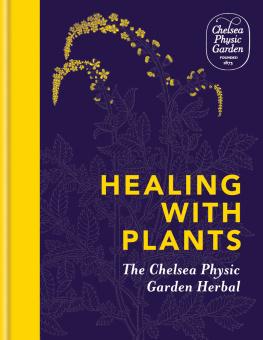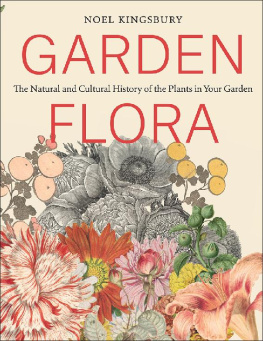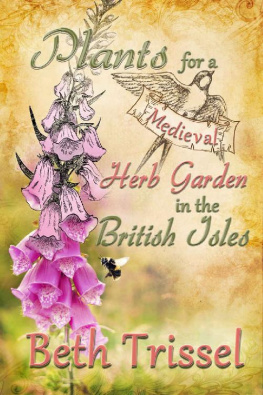Sue Minter - The Apothecaries Garden
Here you can read online Sue Minter - The Apothecaries Garden full text of the book (entire story) in english for free. Download pdf and epub, get meaning, cover and reviews about this ebook. year: 1996, publisher: The History Press, genre: Art. Description of the work, (preface) as well as reviews are available. Best literature library LitArk.com created for fans of good reading and offers a wide selection of genres:
Romance novel
Science fiction
Adventure
Detective
Science
History
Home and family
Prose
Art
Politics
Computer
Non-fiction
Religion
Business
Children
Humor
Choose a favorite category and find really read worthwhile books. Enjoy immersion in the world of imagination, feel the emotions of the characters or learn something new for yourself, make an fascinating discovery.
- Book:The Apothecaries Garden
- Author:
- Publisher:The History Press
- Genre:
- Year:1996
- Rating:4 / 5
- Favourites:Add to favourites
- Your mark:
- 80
- 1
- 2
- 3
- 4
- 5
The Apothecaries Garden: summary, description and annotation
We offer to read an annotation, description, summary or preface (depends on what the author of the book "The Apothecaries Garden" wrote himself). If you haven't found the necessary information about the book — write in the comments, we will try to find it.
The Apothecaries Garden — read online for free the complete book (whole text) full work
Below is the text of the book, divided by pages. System saving the place of the last page read, allows you to conveniently read the book "The Apothecaries Garden" online for free, without having to search again every time where you left off. Put a bookmark, and you can go to the page where you finished reading at any time.
Font size:
Interval:
Bookmark:
THE
APOTHECARIES
GARDEN
A HISTORY OF THE
CHELSEA PHYSIC GARDEN
SUE MINTER
FOREWORD BY
H.R.H. THE PRINCE OF WALES

This book was first published in 2000 by Sutton Publishing Limited
This paperback edition first published in 2003
Reprinted 2006
The History Press
The Mill, Brimscombe Port
Stroud, Gloucestershire, GL5 2QG
www.thehistorypress.co.uk
This ebook edition first published in 2013
All rights reserved
Sue Minter with research by Ruth Stungo, 2000, 2003, 2013
The right of Sue Minter to be identified as the Author of this work has been asserted in accordance with the Copyrights, Designs and Patents Act 1988.
This ebook is copyright material and must not be copied, reproduced, transferred, distributed, leased, licensed or publicly performed or used in any way except as specifically permitted in writing by the publishers, as allowed under the terms and conditions under which it was purchased or as strictly permitted by applicable copyright law. Any unauthorised distribution or use of this text may be a direct infringement of the authors and publishers rights, and those responsible may be liable in law accordingly.
EPUB ISBN 978 0 7524 9527 9
Original typesetting by The History Press
CONTENTS
Dedicated to Sir Hans Sloane in gratitude for his shrewd foresight over the terms and conditions of the indenture of 1722, without which the Garden would not be here at all

A CKNOWLEDGEMENTS
T he original proposal for this book was developed by Ruth Stungo when she was historical researcher, librarian, archivist and garden taxonomist at the Chelsea Physic Garden. She was responsible for much of the new research included in this volume, particularly that relating to the plant specimens sent from the Garden to the Royal Society in the eighteenth century, and to the work of the garden during the present century.
I would like to thank Ruth Stungo for the considerable research she has put into this history, along with previous researchers at the Garden, including Mark Laird. Dee Cook, Archivist at the Society of Apothecaries, was very helpful as were the staff at the Guildhall Library, and Dr Brent Elliot, Librarian at the Royal Horticultural Societys Lindley Library. Several past staff and associates at the Garden read the draft and contributed useful comments and reminiscences; they included Allen Paterson and Dr Mary Gibby. Members of the current Management Council did likewise; they included Chris Brickell, Henry Boyd-Carpenter and Lawrence Banks.
I am also grateful to past researchers at the Garden who have made the scientific work more understandable, particularly Alf Keys of IACR-Rothamsted, Professor Ronald Wood FRS and Professor Ben Miflin. The Stanley Smith Horticultural Trust has generously assisted with the cost of the colour plates.
Sophy Kershaw typed the manuscript most efficiently and was responsible for the stock listing of the Historical Walk which constitutes . Paul Bygrave assisted with taxonomy on the appendices. The City Parochial Foundation generously donated a copy of their official history which assisted understanding the evolution of their policy towards the Garden. I am also grateful to Laurent Lourson for drawing my attention to the connection of the war poet Wilfred Owen to the Garden. The family of William Hales (Mr Chris Dunn) has kindly supplied information about his Curatorship here. Duncan Donald brought to my attention the results of genealogical work by Bruce Forsyths first wife, Penny, which show him to be descended from William Forsyth, Gardener here 177184.
Lastly, my thanks to Christopher Feeney, commissioning editor, and to Helen Gray, editor, for their support.
I NTRODUCTION
W hat was long known as the Apothecaries Garden, and is now the Chelsea Physic Garden, is an extraordinary survival in twenty-first century Britain. This is the first time that its history since 1673 has been brought together in one place and the first time that the history of the Garden in the twentieth century has been told.
The Society of Apothecaries still exists as a medical licensing body and indeed flourishes, in Blackfriars in the City of London, as the largest of the Livery Companies. However, the word apothecary has long been superseded by pharmacist. So who was the seventeenth-century apothecary and why was there a need for a garden?
From the thirteenth century onwards traders in medicinal products, the majority of which were based on herbs, gradually distinguished themselves from the medieval spice dealers. The word apothecary derives from apotheca, which was a store for spices and herbs. Apothecaries needed to be able to identify the herbs they would be purchasing to compound their products and thus avoid adulteration, poisonings or ineffective treatment. This concern (very much still an issue with medical herbalists today) led them into binding apprentices within the Society and required that they study materia medica both growing in the wild and, more conveniently, gathered together in a garden. The Apothecaries Garden was thus a training ground. Not surprisingly, its subsequent history is closely linked to the evolution of medical training. The Society becoming authorized to license medical practitioners in 1815 was crucial for the retention of the Garden into the nineteenth century. Likewise, the ending of the requirement for the study of materia medica in 1895 (through the spreading influence of chemical medicine) was crucial in the decision of the Society to relinquish the Garden in 1899.
What is perfectly clear is that the Garden would not be here at all today but for the extremely shrewd terms of the Deed of Covenant of its benefactor, Sir Hans Sloane, of 1722. Every year, as Curator, I sign a cheque for 5 charged to the Garden as a sundry debtor of the Cadogan Holdings Company, Earl Cadogan being the heir to Sloane. This beneficial ground rental in perpetuity assisted the Society in maintaining the Garden, otherwise dependent on the private resources of its practising members. What was even more significant were the conditions Sloane attached if the apothecaries resolve wavered and they wanted to relinquish the project. The Garden could not be sold but had to be offered to a series of scientific societies. Even Sloanes heirs became restricted by late nineteenth-century legal opinion. They could not build on it or sell it.
Sloanes Deed came to be invoked on three major occasions, once in the 1850s when the Garden was threatened by the spread of Londons railway system, once in the 1890s when the apothecaries did relinquish control and once in the 1970s when the present charity was formed. Rarely can the restrictive clauses of a covenant have had such a beneficial effect for botany. As a writer in John OLondons Weekly on 6 January 1923 reflected: Not one of Londons pleasant places has been more often threatened and saved than the old Physic Garden at Chelsea. It is to the credit of the Garden that, as its history has evolved, it has become greater than its founders intended. In its heyday, the eighteenth century under Philip Miller, the Garden became the most famous botanic garden in Europe for the number and rarity of species cultivated, whether or not they had any direct connection with medicine.
The history of the Garden is full of stories connected to it both directly and indirectly, stories of its worldwide influence beyond its walls. Stories, for example, of the invention of milk chocolate, of pits for pineapples, the first heated glasshouse in England, the genetic improvement of the cotton industry in the Georgia colonies, the transplantation of the tea industry from China to India, the struggle of women for a scientific education, experimentation in double-glazing and the identification of the plant which now cures nine out of ten children of their leukaemia.
Next pageFont size:
Interval:
Bookmark:
Similar books «The Apothecaries Garden»
Look at similar books to The Apothecaries Garden. We have selected literature similar in name and meaning in the hope of providing readers with more options to find new, interesting, not yet read works.
Discussion, reviews of the book The Apothecaries Garden and just readers' own opinions. Leave your comments, write what you think about the work, its meaning or the main characters. Specify what exactly you liked and what you didn't like, and why you think so.

